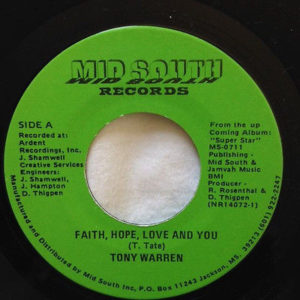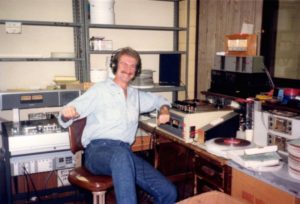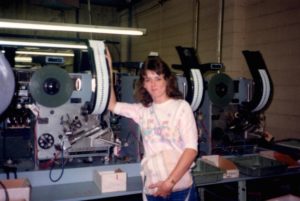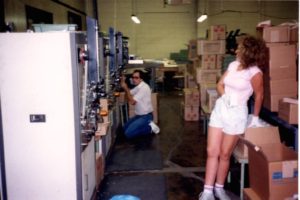OUR STORY
1953
BREAKING GROUND
Alan Bubis aka “The King of the Cheapies” builds the 33,000 square foot record pressing plant at the corner of 48th and Tennessee in west Nashville. Alan and his brother Reynolds ran Tennessee Records until the mid-50s. His business plan was to record knock-offs of hit songs then press and sell the pirated versions though his mail order catalog, which was highly illegal!
1963
MID SOUTH RECORDS
After a few brushes with the Federal Government, Bubis decides to sell his pressing plant to Motown Records and it becomes a legitimate pressing plant called Mid South Records. Motown and Chess Records are the majority of records pressed during this historic music era. Leonard Chess frequents the building and even has a barber chair installed in the area that is now the studio’s dining room.

1963
GENERAL RECORDED TAPE
Motown sells Mid South Records to GRT Records (General Recorded Tape) and it becomes the record pressing plant for GRT. GRT begins pressing albums for RCA, Columbia, Capitol, Atlantic, Arista, K-Tel & Ronco Records. At that time, it was estimated that 90% of all retail stores carried music that was manufactured by GRT.
1970
ELECTROPLATING
GRT purchases the adjacent 7,000 square foot building from Lanahan Plastics and turned it into an electroplating facility to service their growing record pressing needs.

1973
8-TRACK
GRT does a major overhaul to the operations in the building by adding 8-track duplication. All the record presses were upgraded to automatic SMT presses, allowing GRT to pump out a stunning 50,000 records per day.

1977
ELVIS DIES
Elvis Presley Dies. GRT begins pressing only Elvis records, 24 hours a day, 7 days a week for the next 7 months.
1978
HAY DAY
GRT resumes pressing for it’s other clients, and records by artists such as The Grateful Dead, Kenny Rogers, Eric Clapton, Crystal Gale & The Bee Gees are pressed.

1979
END OF AN ERA
GRT declares bankruptcy and closes down their Nashville operations. As a result, vinyl records cease to be pressed at this location.
1981
NATIONAL TAPE & DISC
Chuck Duncan purchases the space and starts NTD Corp, manufacturing cassette tapes. Later the company became National Tape & Disc Corporation, or NTC (you can still see where these letters were on the outside of the building.)

1987
DIGITAL AGE
NTC enters into the digital age by duplicating Compact Discs.

2005
NTC CLOSES
Due to increasing competition in the CD duplicating market from such companies as Disc Makers and Oasis, NTC is forced to close its doors.
2008
NEW BEGINNINGS
Chris Mara leases 7,000 square feet of the building from Chuck Duncan and forms Welcome To 1979 as a recording studio. Mara is unaware of the building’s history at this time, the name of the studio is purely coincidental.

2009
MARA MACHINES
Welcome To 1979 adds an additional 1,500 square feet and forms Mara Machines, an analog tape machine restoration company focusing on restoring MCI tape machines that were originally manufactured in the 1970s and 1980s. These are the same tape machines (and consoles) that Welcome To 1979 utilizes.
2013
VINYL MASTERING
Welcome To 1979 adds a vinyl mastering room equipped with a Neumann VMS 70 lacquer cutting lathe in order to serve its growing vinyl needs. A whopping 3,000 vinyl projects are completed in the next two years.

2014
RECORD YEAR
Mara Machines becomes the world’s largest tape machine restoration company, restoring & selling 50 machines in a single year.

2015
EXPANSION
Chris Mara, Yoli Mara & Lori Hines form Welcome To 1979 Industries and lease an additional 3,800 square feet in the same building. The new company is formed to serve the vinyl industry via their new, state of the art electroforming plant. This new company brings vinyl manufacturing back into the building for the first time since 1979.

TODAY
BACK TO OUR ROOTS
Welcome to 1979 now operates 4 separate business under one roof, much like in the golden days of GRT in the '70s. 1979 is the only recording studio in the world where a record can be tracked, cut, and plated all in the same day.

Jason Isbell

